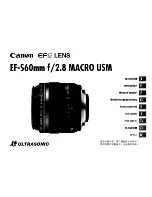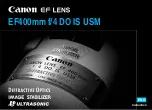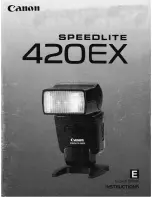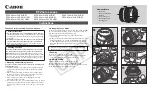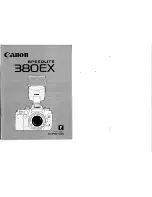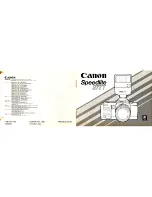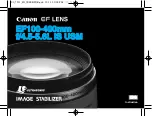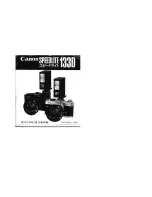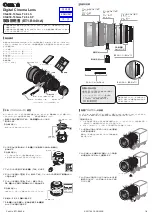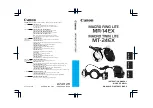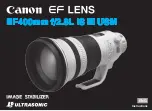
124
Subject in recorded image is too bright, or image flashes white.
Subject is too close, making the
flash too strong.
z
Shoot within correct shooting distance of the
subject when using the internal flash (p. 147).
Subject is over exposed due to
the surrounding area being too
dark.
z
Set the exposure compensation to a negative (-)
setting (p. 75).
z
Use the AE lock or the spot metering function
(pp. 70, 73).
Light is shining directly on the
subject or reflected off the
subject into the camera.
z
Change the shooting angle.
Flash is set to on.
z
Push down the flash to off
(Flash off)
(
Basic Guide
p. 11).
Image contains noise.
ISO speed is too high.
z
Selecting high ISO speeds or
(High ISO
Auto) may increase the amount of noise in an
image. When picture quality is the priority, select
lower ISO speeds (p. 69).
z
In
,
,
and
modes of Special Scene
mode, the ISO speed increases and noise may
occur.
White dots appear on the image.
Light from the flash has
reflected off dust particles or
insects in the air. When
shooting at the maximum wide
angle.
z
This is a phenomenon that occurs with digital
cameras and does not constitute a malfunction.
Eyes appear red.
Light reflecting back from eyes
can make them appear red
when the flash is used in dark
areas.
z
Under these conditions, use the
red-eye
reduction mode (
Basic Guide
p. 11). For this mode
to be effective, the subject must be looking right at
the red-eye reduction lamp. Try asking them to
look directly at the lamp.
z
Even better results can be obtained by increasing
the lighting in indoor settings or approaching
closer to the subject.
Содержание ACANPSS3K1 - PowerShot S3 IS Digital Camera
Страница 162: ...160 MEMO ...
Страница 163: ...161 MEMO ...
Страница 164: ...162 MEMO ...
Страница 165: ...163 MEMO ...
Страница 166: ...164 MEMO ...































